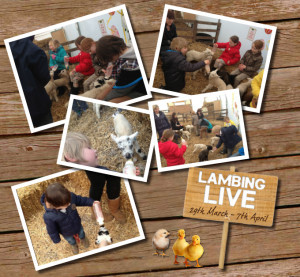 London-based personal injury solicitor Jill Greenfield is putting together the case on behalf of families whose children were hospitalized with the potentially deadly illness.
London-based personal injury solicitor Jill Greenfield is putting together the case on behalf of families whose children were hospitalized with the potentially deadly illness.
Huntley’s Country Stores in Samlesbury pleaded guilty on last week to three breaches to health and safety rules after many people were suspected of contracting E. coli during a three-week ‘Lambing Live’ event at Easter 2014.
Twenty-two children became ill with 15 confirmed cases of E-coli.
The firm was fined £60,000 and ordered to pay £60,000 costs.
One mother, Clitheroe’s Juliette Martin, who attended the lamb-feeding event said it had ‘left a permanent scar on the entire family which we will never forget’.
Ms Greenfield won more than £1 million when she represented ten children affected by an E. coli outbreak at a petting farm in Surrey in 2009.
She is particularly concerned about the possible complications to the victims kidney function in later life but said she could not put a figure on the likely total claim against the firm.
Ms Greenfield, a partner at Fieldfisher solicitors, said she was acting for four families.
She said the government had failed to bring in health recommendations by an inquiry into a similar incident at Godstone Farm in 2009.
 Ms Greenfield said: “If they had been, the tragedy of Huntley’s may never have happened.”
Ms Greenfield said: “If they had been, the tragedy of Huntley’s may never have happened.”
The court heard the tragically typical litany of errors:
- visitors allowed uncontrolled access to lambs – children could enter animal pens and roll in feces-covered straw;
- during bottle-feeding, lambs were allowed to climb onto seats, leaving them soiled with feces;
- pens had open bar gates allowing contaminated bedding to spill onto main visitor area;
- animals were densely packed, allowing bacteria build-up; and,
- hand washing basins meant for visitors were used to clean animal feeding dishes.
A table of petting zoo outbreaks is available at https://barfblog.com/wp-content/uploads/2014/04/Petting-Zoo-Outbreaks-Table-4-8-14.xlsx.
Best practices for planning events encouraging human-animal interactions
Erdozain , K. KuKanich , B. Chapman and D. Powell
03.Apr.14
Zoonoses and Public Health
Educational events encouraging human–animal interaction include the risk of zoonotic disease transmission. ‘It is estimated that 14% of all disease in the USA caused by Campylobacter spp., Cryptosporidium spp., Shiga toxin-producing Escherichia coli (STEC) O157, non-O157 STECs, Listeria monocytogenes, nontyphoidal Salmonella enterica and Yersinia enterocolitica were attributable to animal contact. This article reviews best practices for organizing events where human–animal interactions are encouraged, with the objective of lowering the risk of zoonotic disease transmission.

